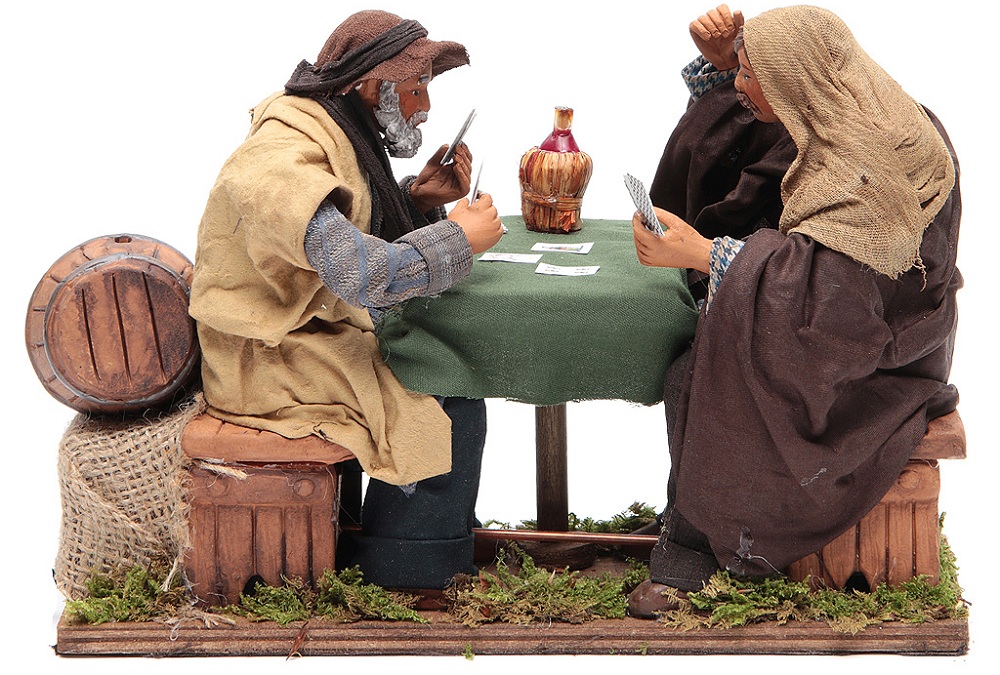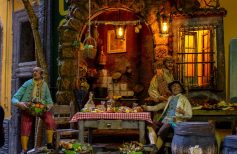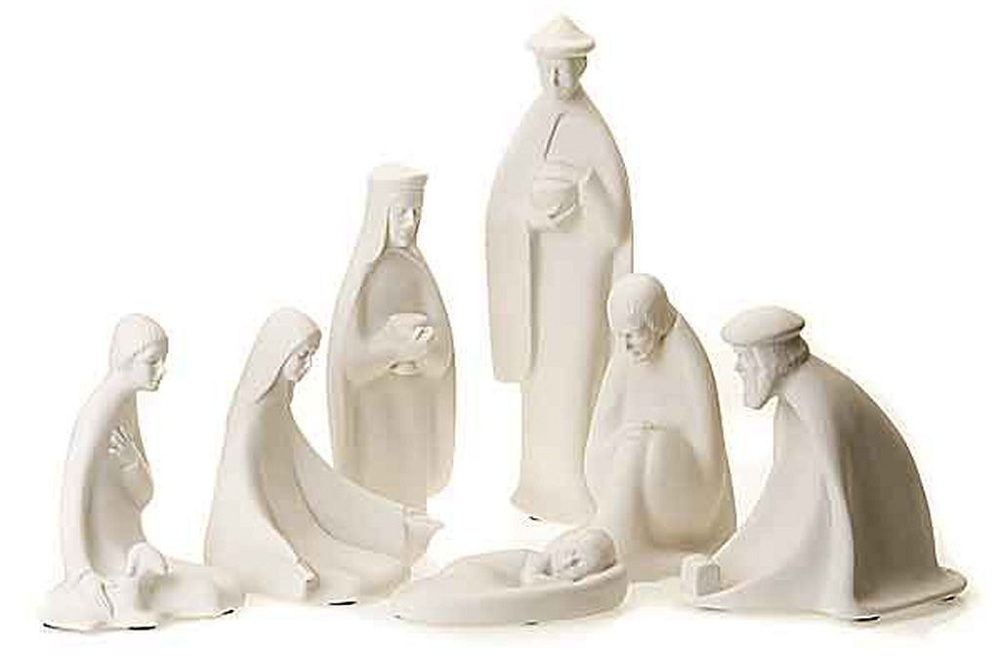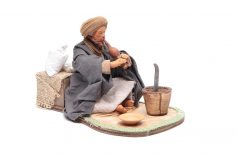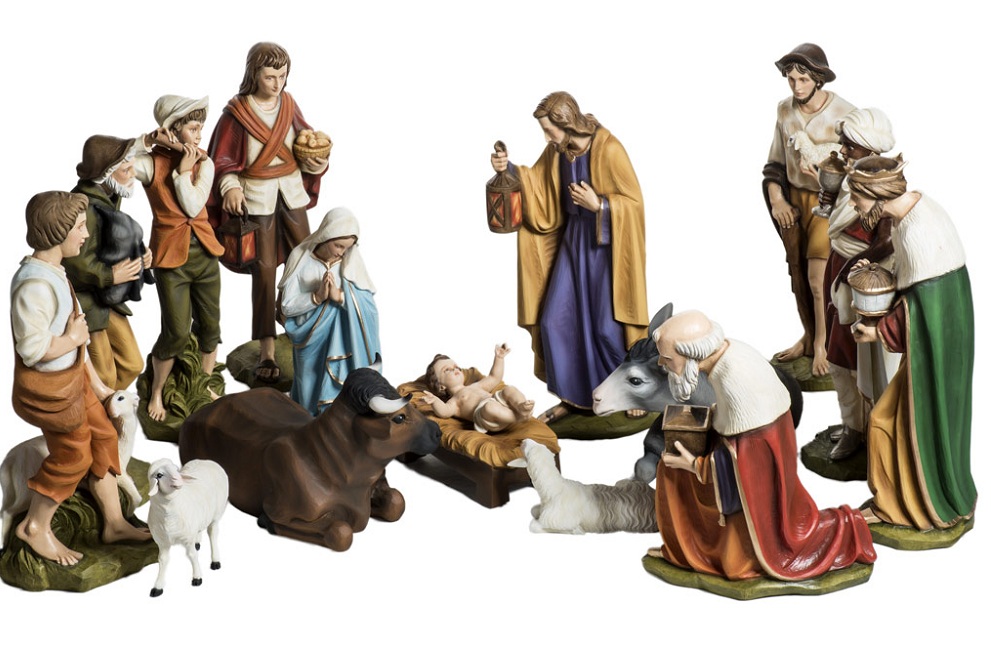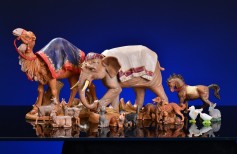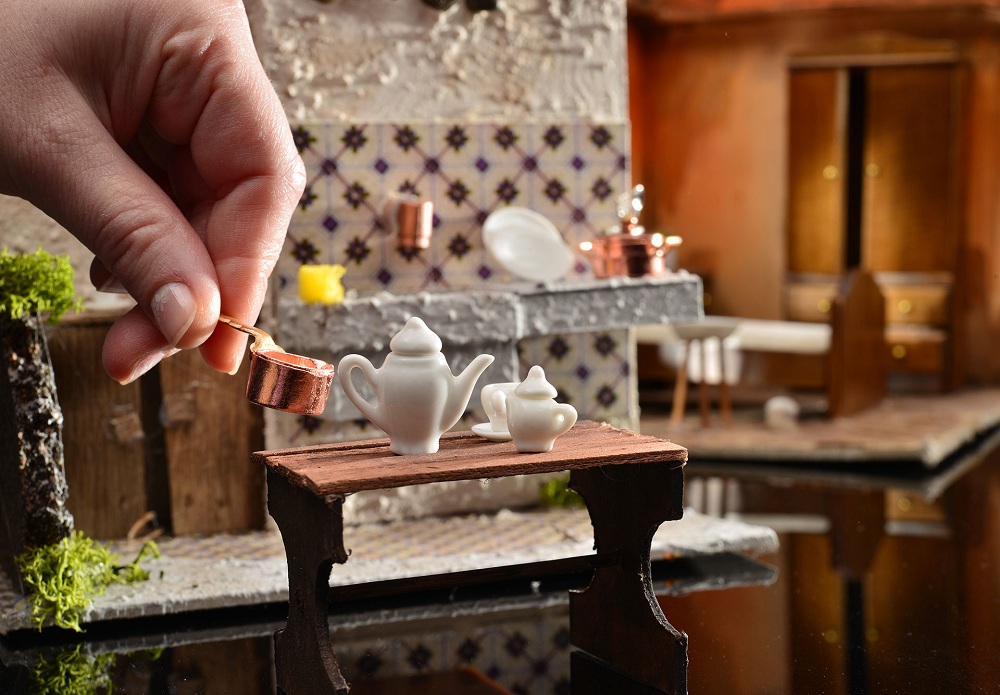The nativity scene has an ancient tradition that is renewed every year in homes and churches all over the world. This charming custom would be difficult to give up, as it remind us of childhood Christmases and the magnificent appearance of all these unique and unmistakable characters. Every year they are taken out of their box in the cellar, and as if by magic, they soon come to life before our very eyes, in the scenery of the silver stars, musk, white pebbles, wood and foil rivers.
The Neapolitan nativity, one of the most famous and classic scenes in our culture, has boasted of depicting not only the majestic birth of baby Jesus since the antiquity, but has always carefully and attentively dwelled on agricultural life in its depiction of everyday people and typical jobs of yesterday and today.
In time, this focus on realism and costume-making has recently evolved into the creation of moving nativity scenes. The terracotta figures, dressed in velvet and braids but also more humble and more realistic fabrics, come to life thanks to the motorised system hidden within the art, which repeat the old movements of their profession.
We have, therefore, women that scrub the door, farmers that hoe the garden or feed the animals, old gossiping next-door neighbours that throw seeds to the chickens, fruit pickers, pork roasters with their roasters, and so on.
An infinitely small yet realistic world, wrapped up in ancient, timeless splendour, whose background and lights take on an even more magical charm. The moving nativity statues are all handmade, which makes them unique, collectable pieces.
Shepherds are particularly consecrated in the moving nativity, like the old shepherd who carries a rabbit in his arms or the one who moves his grain with his herd, the shepherd who brings the donkey or the one that guides the cow, or the milkmaid that shaves the sheep or even the one who milks the goat. Many characters from a forgotten time come to life in this timeless frame of the nativity.

